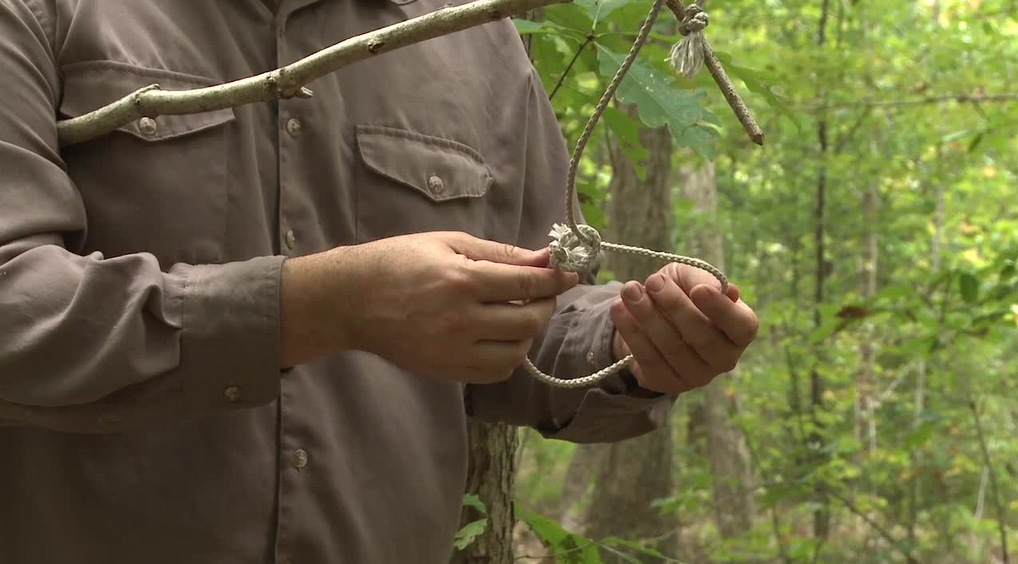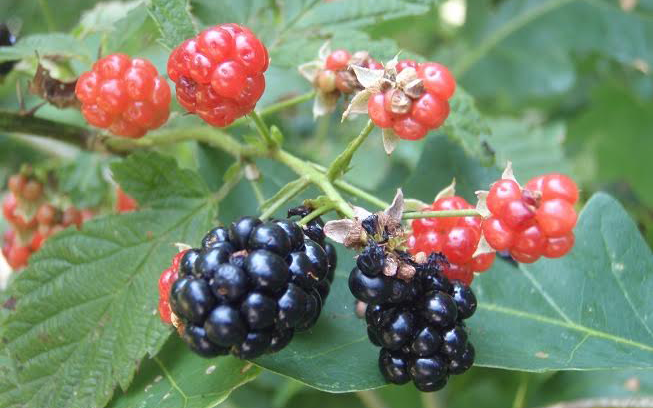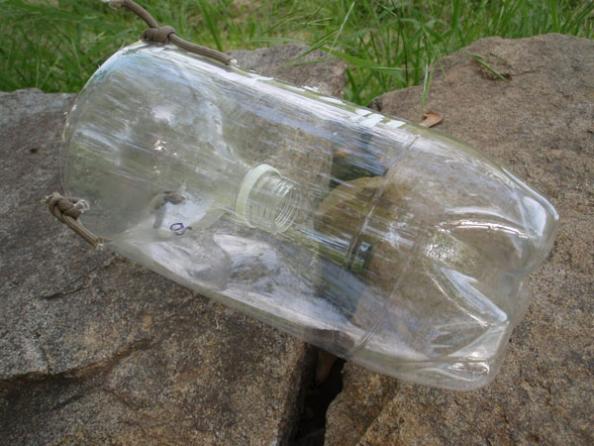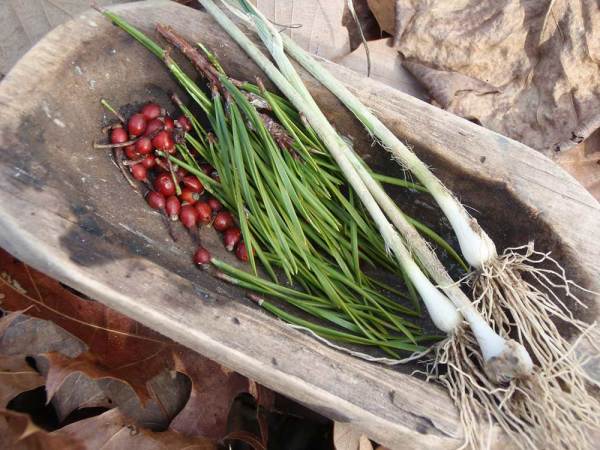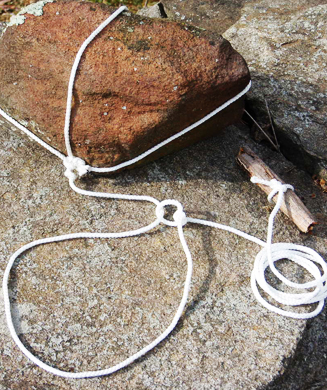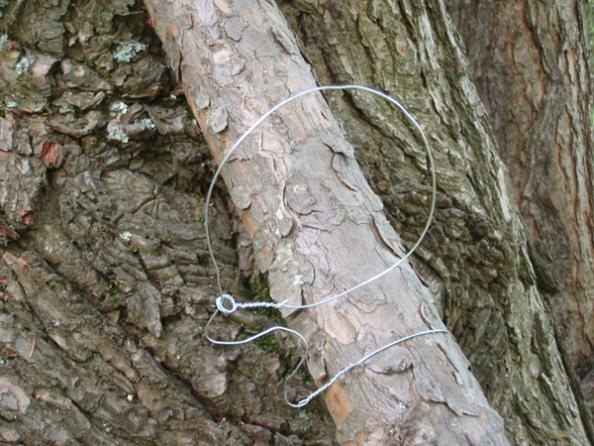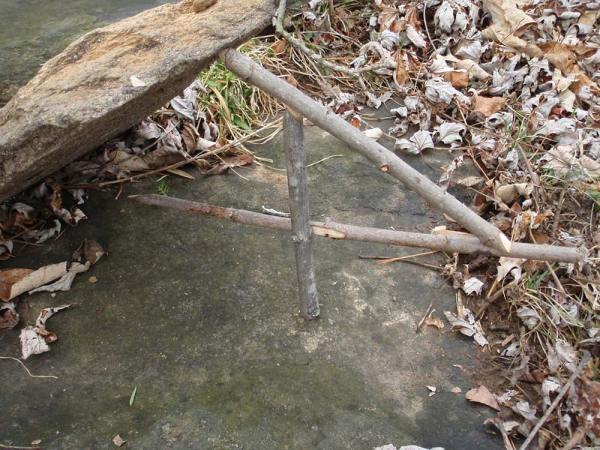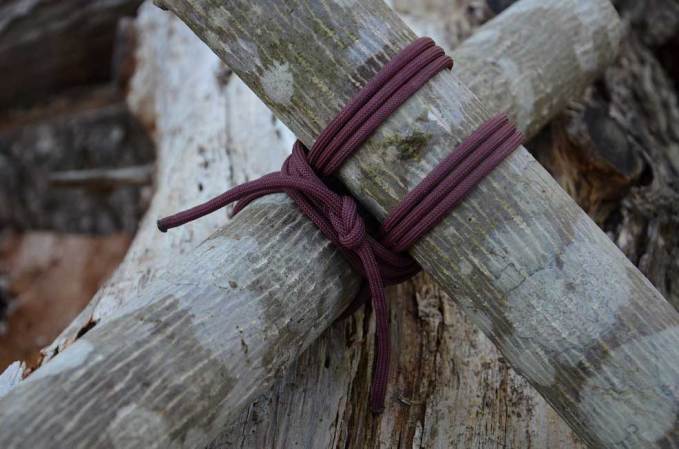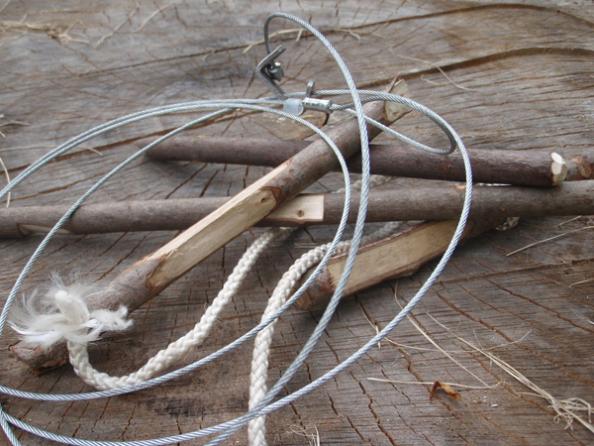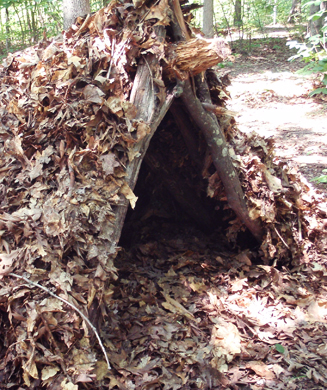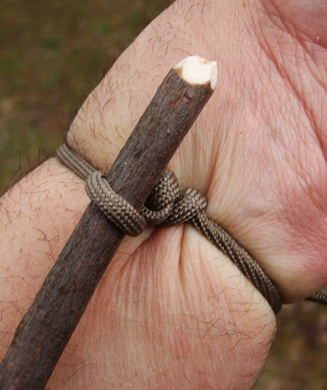Traps can provide us with precious calories from meat and fat during a survival situation. Think of them as little hunters that you put out to do your work for you while you are off accomplishing other tasks. There are as many different traps as there are creatures to catch, but the trap in this video is called the “bait stick snare.”
It’s from a great little book called Bushcraft by Richard Graves. The book is recently back in print, and it’s worth adding to your survival library, if only for the traps. This bait-driven spring pole snare is my go-to trap for most small game animals and most occasions. To build this trap, you’ll need to find a strong, flexible sapling to serve as a spring pole, a forked stake to drive into the ground, a pencil-diameter toggle stick, a snare line, a toggle line, a bait stick, and some bait.
STEP 1
Find your spring pole, trim off all of the branches and leaves, then tie the snare line to the end of it. Bend the pole down until the snare line touches the ground and mark that spot. A braided steel snare cable works best, and you should keep at least one in your survival equipment. The soft rope shown in this video is for demonstration purposes. If you use rope for your trap and the force of the trap doesn’t kill your quarry, the critter will more than likely chew its way free. (That said, I did once have a possum chew through a 12-strand steel cable. The hair it left behind gave away the culprit’s identity.)
STEP 2
Drive the forked stake into the ground on the marked spot. This keeps the snare line more or less plumb, which is vital to setting the trap. Tie your pencil toggle to the end of the trigger line.
STEP 3
Run the toggle under the fork of the stake in the ground, keeping the toggle parallel to the ground and at a right angle to the stake. Now, set your baited trigger stick out at the end of the toggle, which should set the entire trap. Next, use a stick to test it. If it springs quickly, you are ready to set up some twigs to support the noose, but do this before resetting the trigger. Check your trap daily; this is wise to do anyway, but it might also be a trapping regulation in your area.
Important Warnings
First, never handle the noose of a snare line with your bare hands or fingers once the trigger is set. If the trap misfires, the noose can close on your hand or fingers, tearing your skin or perhaps even removing a digit.
Second, check your local trapping regulations to see if snares are legal in your area and learn any specifics about local trapping regulations (size, placement, bait, etc.).
Third, prepare for failure. Trapping is a numbers game. Even with the right bait in the right trap in the right spot, you still might not catch anything. If you are trapping for survival purposes or for your livelihood, set no fewer than two dozen traps and check them daily. Any fewer is a waste of time.
Have you set snares before? Do you carry snares in your survival gear? Let us know in the comments.
